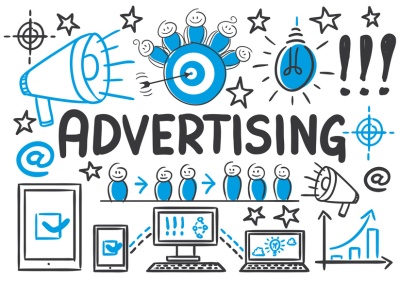The Power of Advertising
Do you ever find yourself humming a catchy jingle or remembering a funny commercial long after you've seen it? That's the power of advertising. Brands use creativity, psychology, and strategy to capture your attention, and it's no accident that some ads are more memorable than others. In this article, we'll take a look at the different tactics used by advertisers, and why they work.
what is advertising?
Simply put, advertising is a form of marketing that promotes a product or service to a target audience. Advertising can take many forms, from TV commercials and billboards to social media ads and influencer marketing. The goal of advertising is to create brand awareness, generate interest in a product or service, and ultimately, drive sales.
Now that we know what advertising is, let's take a closer look at the different tactics used by advertisers to capture our attention.
Storytelling
Humans are wired to respond to stories. That's why advertisers often use storytelling as a way to connect with their audience. By creating a narrative around their product or service, advertisers can evoke emotions and build brand loyalty. Think about the Budweiser Clydesdale horses or the Coca-Cola polar bears - these iconic ads tell a story that resonates with viewers.
Humor
Laughter is a powerful emotion, and advertisers know it. By using humor in their ads, brands can make a lasting impression on viewers. A funny ad is more likely to be shared on social media, which can increase brand exposure and drive sales. Just think about the Old Spice "The Man Your Man Could Smell Like" campaign - it went viral thanks to its clever writing and absurd humor.
Emotion
Advertisers also use emotion to connect with their audience. By appealing to our emotions, brands can create a sense of empathy and understanding. This is especially effective when it comes to cause marketing, where brands align themselves with a social or environmental issue. For example, the Dove "Real Beauty" campaign aimed to promote body positivity and self-esteem in women.
Celebrity Endorsements
It's no secret that celebrities have a lot of influence over their fans. That's why advertisers often use celebrity endorsements to promote their products. By associating their brand with a well-known celebrity, brands can tap into their fanbase and reach a wider audience. Just think about Michael Jordan's iconic "Be Like Mike" campaign for Gatorade.
Shock Value
Sometimes, advertisers use shock value to capture our attention. By creating an ad that's unexpected or controversial, brands can generate buzz and get people talking. However, this tactic can be risky - if an ad is too shocking, it can backfire and damage the brand's reputation. That being said, there are some examples of shock value done right, such as the "Dumb Ways to Die" campaign for Melbourne Metro Trains.
So, why do these tactics work?
It all comes down to psychology. Our brains are wired to respond to certain stimuli, such as stories, humor, and emotions. By using these tactics in their ads, brands can tap into our subconscious and create a lasting impression. Additionally, repetition plays a big role in advertising. The more we see an ad, the more likely we are to remember it. That's why brands often run the same ad multiple times across different platforms.
However, not all advertising is created equal. There are some ads that are simply annoying or forgettable, and these ads can actually have a negative impact on a brand's reputation. That's why it's important for advertisers to strike a balance between creativity and relevance. An ad might be clever or funny, but if it doesn't resonate with the target audience, it will likely be ignored or even disliked.
To ensure that their ads are effective, brands must first identify their target audience. By understanding who their ideal customer is, brands can tailor their message and choose the right platforms to reach them. For example, if a brand is targeting teenagers, they might focus on social media platforms like TikTok or Instagram, whereas if they're targeting older adults, they might use more traditional forms of advertising like TV commercials or print ads.
In addition to identifying their target audience, brands must also consider the context in which their ads will be seen. For example, an ad that's funny and lighthearted might work well during a comedy show, but it might not be appropriate during a news segment. Similarly, an ad that's designed to be seen on social media might not translate well to a billboard or print ad.
One of the biggest challenges facing advertisers today is the rise of ad-blocking software. More and more people are using ad-blockers to avoid seeing ads online, which means that brands must find new and creative ways to reach their audience. This has led to a rise in native advertising, where brands create content that looks and feels like editorial content, but is actually an ad in disguise. For example, a travel brand might create an article about the top 10 destinations to visit in Europe, but include a link to their own travel package at the end.
Labels: Business


0 Comments:
Post a Comment
Subscribe to Post Comments [Atom]
<< Home